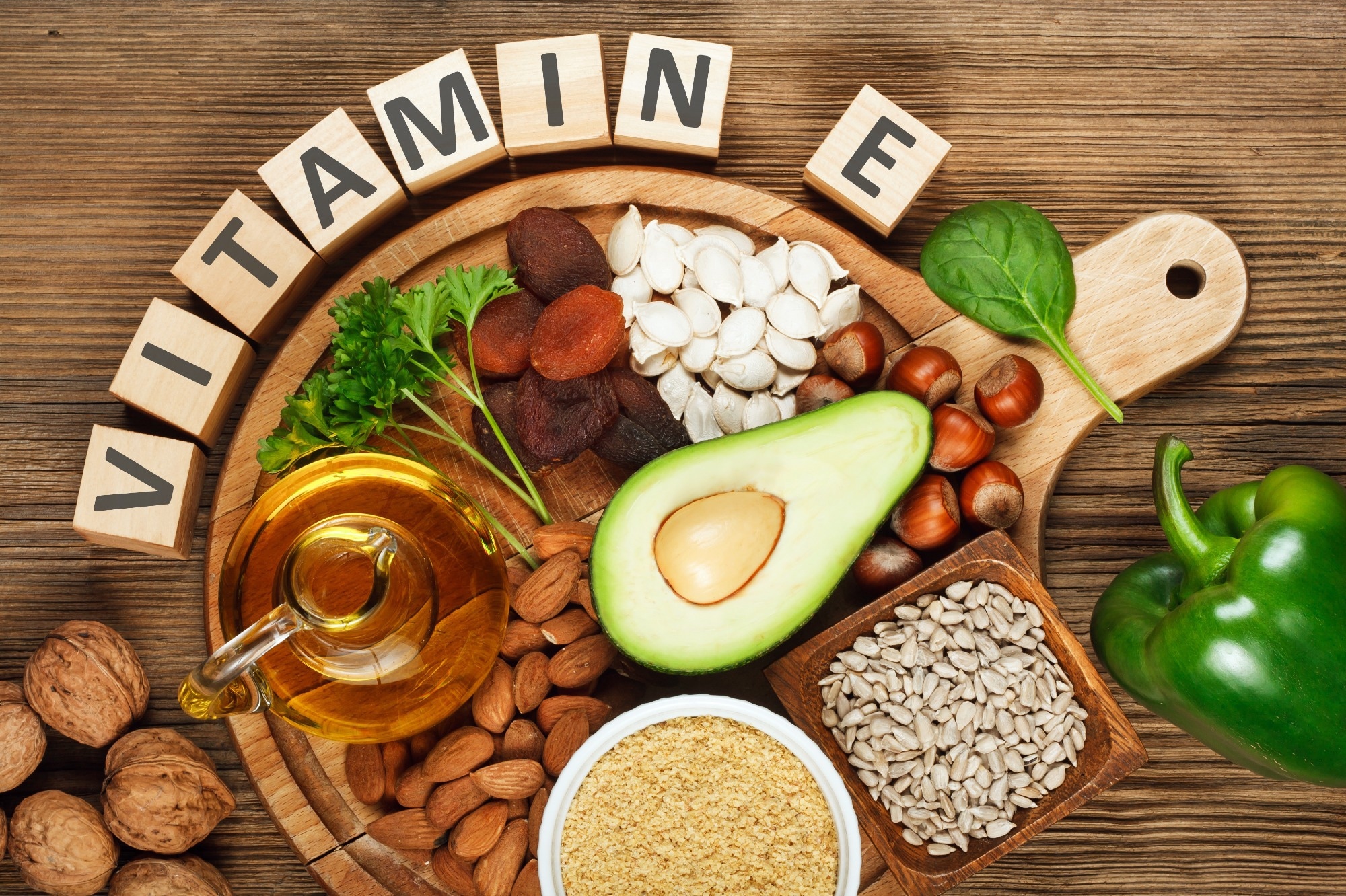In a recent study published in the journal Nutrients, researchers examined the relationships between vitamin E or circulating α-tocopherol intake and health outcomes using meta-analyses.
 Study: Vitamin E and Multiple Health Outcomes: An Umbrella Review of Meta-Analyses. Image Credit: Evan Lorne/Shutterstock.com
Study: Vitamin E and Multiple Health Outcomes: An Umbrella Review of Meta-Analyses. Image Credit: Evan Lorne/Shutterstock.com
Background
Vitamin E is a crucial nutrient for human health, acting as an antioxidant and preventing the oxidation of polyunsaturated fatty acids in membranes. It is found in eight plant sources of fat-soluble compounds, including tocotrienols and tocopherols.
However, only α-tocopherol meets the body’s need for vitamin E, as it is the most frequently retained form after ingestion. The Food and Drug Administration (FDA) mandates specific labeling of foods and supplements, supporting the finding that only α-tocopherol fits the definition of vitamin E in the United States.
Earlier studies suggest that vitamin E may prevent cardiovascular disease (CVD) by reducing lipoprotein oxidation and platelet aggregation. However, some credible research has refuted the claim that extra vitamin E can reduce CVD, as well as the relationship between vitamin E and cancer.
An umbrella review was conducted by the authors of the present study to gather, summarize, and assess the quality and strength of meta-analysis evidence on vitamin E intake or circulating α-tocopherol and health outcomes.
About the study
The authors conducted a systematic review and meta-analysis to examine the association between vitamin E consumption and various health outcomes through November 2021.
They searched PubMed, Excerpta Medica Database (EMBASE), and the Cochrane Library of Systematic Reviews using the search parameters suggested by the SIGN guidance. They included randomized controlled trials (RCTs) and observational data, documenting the study selection process with a PRISMA flowchart. All relevant meta-analyses examined the association between vitamin E intake or circulating α-tocopherol and health outcomes.
The research excluded animal and lab tests and included only one meta-analysis per health outcome. Each meta-analysis’ methodological quality was evaluated using Online AMSTAR 2, a 16-item checklist tool for the assessment of multiple systematic reviews.
The Grading of Recommendations, Assessment, Development, and Evaluations (GRADE) method was utilized to evaluate the supporting evidence for each outcome encompassed by the umbrella review. Four categories of evidence were derived from eligible meta-analyses, spanning in quality from very high to very low.
The research team recalculated each health outcome's meta-analysis, summary effect, magnitude, and 95% confidence interval using DerSimonian and Laird's random-effects model. The analysis was conducted without patient participation, and local policymakers intended to share the findings on the website of the Cochrane China Centre.
Results
This review analyzed 32 papers and 64 health outcomes from 409 RCTs and 268 observational studies, including four different sources of vitamin E. The study found that supplemental vitamin E did not significantly affect the first four health outcomes but positively affected the latter two.
Supplemental vitamin E may help hemodialysis patients with inflammation and oxidative stress but revised nutritional recommendations for people with chronic kidney disease (CKD) suggest that there is not enough evidence to recommend vitamin E supplementation due to the poor quality of the included RCTs and the variability of results.
The inclusion of observational studies resulted in low scores for GRADE and AMSTAR2, despite evidence of a positive relationship between circulating α-tocopherol levels and asthma in children.
The authors discovered that vitamin E protects against 31 health outcomes associated with its consumption or circulating α-tocopherol levels. The remaining 33 health outcomes did not exhibit any negative correlations with vitamin E.
The 2018 recommendations supported giving children with non-alcoholic fatty liver disease (NAFLD) the appropriate quantity of vitamin E following a biopsy; however, additional research is required prior to widespread use.
The use of vitamin E in pediatric NAFLD patients is permitted in the absence of sufficient study evidence. Over half of the observational studies indicated nominally statistically significant protective relationships, possibly due to RCTs being more conservative and having lower statistical power.
This review examines the role of vitamin E in cancer and cardiovascular disease, focusing on its anti-inflammatory and antioxidant properties. The U.S. Preventive Services Task Force (USPSTF) concluded in 2014 that vitamin E supplementation does not reduce the incidence of disease in healthy populations without nutritional deficiencies.
Preclinical research suggests that the structure of vitamin E is essential for preventing cancer caused by vitamin E. Future research should investigate the impact of specific isoforms of vitamin E on cancer and the potential protective effect of high vitamin E intake on tocotrienol levels, potentially having a protective effect against cardiovascular disease.
Conclusion
To summarize, the researchers investigated the link between vitamin E intake and various health outcomes, highlighting potential advantages.
Observational studies validated associations between dietary vitamin E, total vitamin E, and circulating α-tocopherol levels, but no definitive conclusion was reached regarding the positive aspects. Future research should investigate specific isoforms of vitamin E and the potential protective effect of high vitamin E intake on tocotrienol levels, potentially preventing cardiovascular disease.
Further studies and trials with superior designs are needed to draw definitive conclusions.